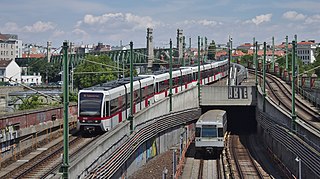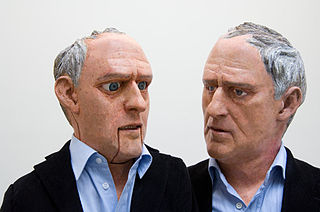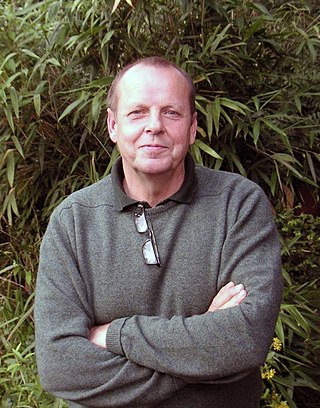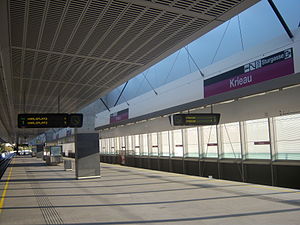Public art is art in any media whose form, function and meaning are created for the general public through a public process. It is a specific art genre with its own professional and critical discourse. Public art is visually and physically accessible to the public; it is installed in public space in both outdoor and indoor settings. Public art seeks to embody public or universal concepts rather than commercial, partisan, or personal concepts or interests. Notably, public art is also the direct or indirect product of a public process of creation, procurement, and/or maintenance.
Orlando (1914–2002) and his brothers Cláudio (1916–1998) and Leonardo Villas-Bôas (1918–1961) were Brazilian brothers who worked in indigenous activism. In 1961 they succeeded in getting the entire upper Xingu legally protected, making it the first massive indigenous area in all South America, and the prototype for dozens of similar reserves all over the continent.

The Vienna U-Bahn, where U-Bahn is an abbreviation of the German word Untergrundbahn, is a rapid transit system serving Vienna, Austria. The five-line network consists of 83.1 kilometers (51.6 mi) of route, serving 109 stations. 459.8 million passengers rode the U-Bahn in 2019.

OSGEMEOS are identical twin street artists Otavio Pandolfo and Gustavo Pandolfo. They started painting graffiti in 1987 and their work appears on streets and in galleries across the world.

Joannis Avramidis was a contemporary Greek-Austrian painter and sculptor. He was born in Batumi, on the Black Sea, in the Adjarian Autonomous Soviet Socialist Republic, an Autonomous Republic of the former Soviet Union, to a family of Pontic Greeks, who had fled the repression of ethnic minorities in the Ottoman Empire in the turmoil leading up to the Greco-Turkish War.
Bo Christian Larsson is a Swedish artist who works mostly with large-sized drawings, installations, performances and objects.

Martina Schettina is an Austrian artist. The main part of her work is Mathematical art.
Marianne Maderna is an Austrian installation artist.
Assocreation is a group of fine artists founded in Vienna, Austria in 1997. Its works are primarily based on haptic perception and conscious temporal motion in space. In seeking to inspire reflection and insight through motion and sensory experiences, Assocreation works primarily with interactive installations and public happenings. Ground and floor play an important role in its works.

Stephan Huber is a German sculptor and object artist.

Line U2 is a line on the Vienna U-Bahn metro system. Opened in 1980, it currently has 20 stations and a total length of 16.7 km (10.4 mi), from Schottentor to Seestadt. It is connected to U1 at Praterstern and U4 at Schottenring.

The Memorial for the Victims of Nazi Military Justice is located at the Ballhausplatz in the centre of Vienna, opposite the President's office and the Austrian Chancellory. The monument was created by German conceptual artist Olaf Nicolai. The inscription atop the three-step sculpture features the poem by Scottish poet Ian Hamilton Finlay consisting of just two words: all alone.

Peter Schwickerath is a German sculptor.
Steinbrener/Dempf & Huber, founded in 2001, is an Austrian group of artists consisting of sculptor Christoph Steinbrener, photographer and graphic designer Rainer Dempf and architect Martin Huber. It was founded in 2001.

Ingo Nussbaumer is an Austrian artist and researcher.

The Euro-Skulptur by Ottmar Hörl set up at Willy-Brandt-Platz in Frankfurt am Main, Germany, is one of two copies of the work that have been put on public display. It is a 14-metre (46 ft) tall electronic sign that shows a Euro sign and twelve stars around, weighing 50 tonnes.

Trompe-l'œil is a 112-meter-long color field painting created in 1998 by Maria Bettina Cogliatti. It overlooks the Katastrophenbucht in Zug, Switzerland.

Katharina Cibulka is an Austrian feminist artist, filmmaker and photographer whose work addresses gender-based inequity and power structures through public art projects such as her series of installations "SOLANGE". For her SOLANGE installations, Cibulka covers scaffolding at construction sites with monumental cross-stitch messages in bright pink tulle on white mesh fabric, following the pattern "As long as ... I will be a feminist." At least 27 SOLANGE installations have appeared in at least 21 cities, in countries including Austria, Slovenia, Morocco, Germany, and the United States. In 2021, Cibulka received the Tyrolean Prize for Contemporary Art from the State of Tyrol.

Ingrid Hornef is a German sculptor, installation artist, curator and painter. She is a representative of Concrete art and became best known for using a dice as a random number generator in her series of works Alea iacta est.

Franz Immoos is a Swiss-Dutch object installation artist and photographer. He was born in Menziken.




















